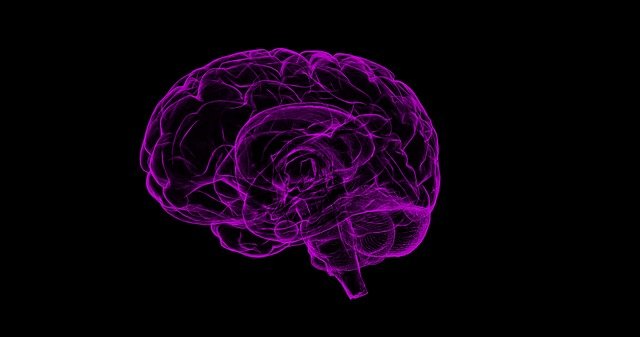Alzheimer’s disease is a vicious illness most often characterized by drastic decline in cognitive function including memory loss and confusion — frequently causing severe emotional stress for the affected along with their family and friends. Fortunately, recent technology, called gamma band neural stimulation, has emerged, showing promise of having a significant impact on Alzheimer’s. Although the direct causes and mechanisms by which Alzheimer’s affects people are not fully known, there are several viable hypotheses that have been found to have merit. The common key pathological understanding between all of them is that extracellular deposits of amyloid-β (Aβ), and intracellular neurofibrillary tangles (NFT) of tau, which is a protein that helps create structures that transport nutrients in nerve cells, are the main markers and causes of visible symptoms. The most common hypothesis, the amyloid hypothesis, posits that mutations in genes coding for amyloid-β precursor protein (AβPP), a protein metabolized to breakdown products, and presenilin peptides, which form catalytic subunits in gamma secretases which also breakdown proteins, result in less efficient AβPP catabolism. This in turn leads to Aβ oligomer aggregation forming insoluble Aβ plaques. This causes synaptic damage and destructive inflammation, along with the phosphorylation of tau, which all lead to cognitive dysfunction and dementia.
The common key pathological understanding between all of them is that extracellular deposits of amyloid-β (Aβ), and intracellular neurofibrillary tangles (NFT) of tau, which is a protein that helps create structures that transport nutrients in nerve cells, are the main markers and causes of visible symptoms.
Currently, the only pharmacologic treatments are acetylcholinerase inhibitors and N-methyl-D-aspartate receptor antagonists. Experts based the inhibitors on the cholinergic hypothesis, meaning that the medicine mimics the natural role of acetylcholine as a neurotransmitter in the brain. Unfortunately, these treatments can only slow the progression of the disease by around 30 percent and cannot prevent nor cure Alzheimer’s. However, gamma band neural stimulation shows promise to significantly impact the disease. During sensory information processing and cognitive memory tasks, gamma activity increases in the brain. A reduction in gamma power occurs in people with Alzheimer’s even before there is a visible accumulation of plaque or amyloid protein.
In an experiment done by Iaccarino et al, 40 hertz brain stimulation was shown to have significant positive effects. The levels of amyloid precursor protein (APP) intermediates (C-Terminal and N-Terminal fragments) were measured to examine the effects on the APP cleavage in the hippocampus of 5XFAD/PV-Cre mice that model Alzheimer’s. APP determines brain amyloid concentration, and is the precursor to Aβ; the more cleavage of APP that occurs, the greater the brain amyloid concentration, a pathological marker of Alzheimer’s. After the 40 Hz stimulation, there was a significant reduction in C-Terminal and N-Terminal fragments showing less cleavage of APP. Experts also concluded that the stimulation decreases endosomal processing of APP, as they documented a decrease in the markers for endosomes (early antigen 1 and Ras-related protein).
After the 40 Hz stimulation, there was a significant reduction in C-Terminal and N-Terminal fragments showing less cleavage of APP.
The 40 Hz stimulation also caused changes in the state of microglia, which are brain and spine cells that act as immune defense for the central nervous system. Researchers observed that 35 percent of the upregulated genes, or genes expressed at higher rates due to the stimulation, had the highest expressions in microglia. Almost twice as many microglia were observed in the 40 Hz group compared to the control groups. In addition, microglia cell body diameter increased by 138.7 percent compared to random stimulation. Given that microglia act as the main defense for the brain, an increase in the amount and size of microglia suggests that the 40 Hz stimulation leads to a more effective brain defense system as well as decreased Aβ plaque accumulation.
Visual stimulation has also been shown by the same researchers to be an effective method of Aβ level reduction. After 3-month-old 5XFAD mice were exposed to 40Hz visual light stimulation using white lights, Aβ1-40 and Aβ1-42 levels were respectively reduced by 57.96 percent and 57.97 percent compared to the dark controls. The light stimulation traveled through the retina and optic nerve and resulted in increased gamma activity in the visual cortex, which led to the reduced Aβ levels.
Although there is still much more research to be done, especially regarding the effects of gamma stimulation on humans and not just mice, gamma stimulation has emerged as one of the first treatments with the potential to treat Alzheimer’s effectively. Instead of just mildly ameliorating some of the symptoms, it may be able to treat already developed Alzheimer’s and even stop the disease from progressing.
Journal of Alzheimer’s Disease (2018). DOI:10.3233/JAD-180391
Nature (2016). DOI:10.1038/nature20587






